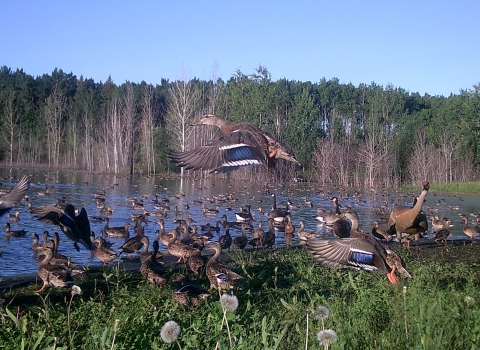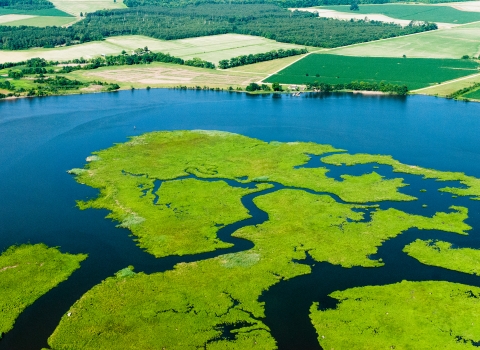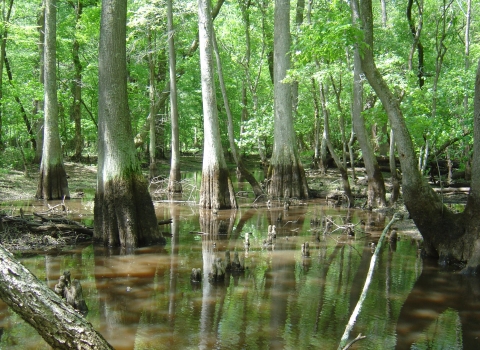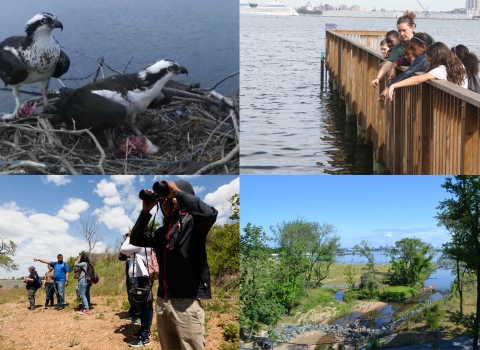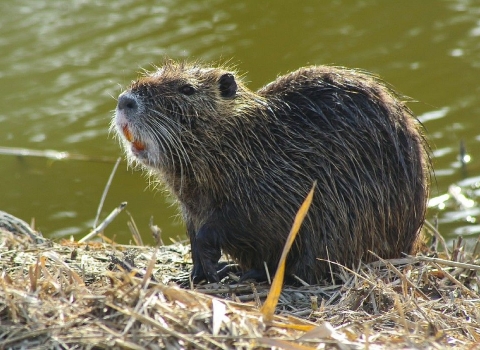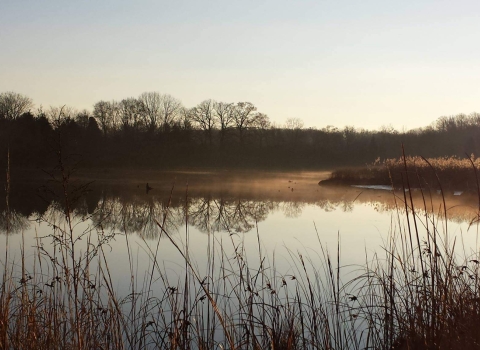Projects and Research
On September 24, 2024, the Director of the U.S. Fish and Wildlife Service approved a Land Protection Plan (LPP) to establish an acquisition boundary for the Southern Maryland Woodlands National Wildlife Refuge. The FWS Northeast Region Division of Realty settled on a 31.38-acre parcel in Nanjemoy, Charles County, Maryland, to formally establish the refuge on December 5, 2024.
Final...
The Delmarva Restoration and Conservation Network (DRCN) consists of federal, state, and local government agencies and non- governmental organizations that are collaborating on a Restoration and Conservation Strategic Action Plan for the Delmarva Peninsula in Delaware, Maryland, and Virginia. We envision a Delmarva where native fish and wildlife thrive; the fabric of healthy natural...
The Pocomoke River Project is a long term initiative to reconnect the river channel to its floodplain along the river’s main stem and many of the river’s tributaries. In the 1940s extensive channelization straightened the river and left an artificial levee 3 to 12 feet high along both river banks. The levee restricts the natural flow of floodwaters in and out of the Pocomoke’s forested...
What began as the restoration of an abandoned area near Baltimore Harbor has grown into a nationally recognized partnership connecting the city’s residents to the outdoors. The U.S. Fish and Wildlife Service designated Masonville Cove, as the nation’s first Urban Wildlife Refuge Partnership on September 26, 2013.
The Maryland Port Administration built the Masonville Dredged Material...
Once a haven for wildlife, Poplar Island, in the mid Chesapeake Bay region, was slipping away at a rate of more than 13 feet a year due to sea level rise, land subsidence and erosion. The island was well on the way to becoming just another sand shoal.
Maps and records from the 1600’s describe Poplar Island as over 2,000 acres. The Paul S. Sarbanes Ecosystem Restoration Project at...
Nutria Eradication Project
Protecting and Conserving Communities of the Delmarva Peninsula
Nutria (Myocastor coypus) are invasive, semi-aquatic, South American rodents first released into Dorchester County, Maryland in 1943. Nutria are not native to Maryland's wetland ecosystems; therefore, there are few predators or natural conditions to control their population. Since...
The National Detector Dog Training Center trains dogs for various agencies including U.S. Customs and Border Protection and the U.S. Fish and Wildlife Service on targets ranging from agricultural products to contraband wildlife items. Detector dogs are those trained to find a target odor. Dogs have 300 million olfactory receptors making them efficient at searching landscapes to find an odor...
Background
The 300-acre Koppers Co., Inc. (Newport Plant) Superfund Site is located along the Christina River and White Clay Creek near Newport, Delaware. Between 1929 and 1971, site owners operated a wood-treating facility, which primarily used creosote, a mixture of polynuclear aromatic hydrocarbons (PAHs) and other chemicals. Plant operations, spills, leaks, and waste management...


